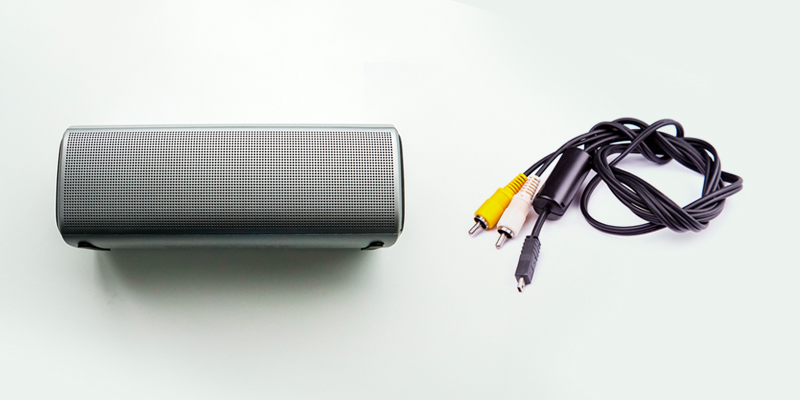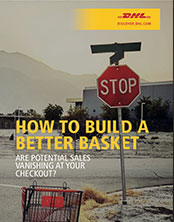Grow your business with the Discover newsletter
Logistics advice & insights straight to your inbox
Subscribe now
The good news is that there are lots of measures you can take to help you reach that goal. Some simple, some less so. Some may be new to you and some you may be doing already – although it never hurts to take a fresh look at every aspect of your company’s operation. Whichever ones you decide to adopt will depend on the nature of your e-commerce business and the market you’re operating in.
You might have invented a healthy, life-extending whiskey. But unless people know of its existence, it’ll be the e-commerce equivalent of a tree falling in the forest. So get the news out there, using all appropriate avenues. Send samples to influential bloggers and Instagram users. Use Twitter. Join forums. Write guest articles. Learn about search engine marketing and allocate a budget to Google Adwords, Bing Ads or Facebook. Check out any competitors in your field (unlikely in our healthy whiskey example). And leverage the dark arts of search engine optimization.
“You can’t just open a website and expect people to flood in. If you really want to succeed you have to create traffic.” Joel Anderson, CEO, Walmart.
You’re spending your time running a business, so it’s probably better to find someone who’s proficient at SEO and its ever-changing rules. If you do prefer to go it alone, use a tool such as Long Tail Pro to help you find the most profitable keywords. When it comes to your site’s copy, the one golden rule is to write like a person addressing other people.
“How well we communicate is determined not by how well we say things, but how well we are understood.” Andy Grove, former CEO, Intel.
OK, so let’s assume people are landing on your website. What can you do to make sure they ADD TO BASKET, PROCEED TO CHECKOUT and BUY NOW? Two of the biggest obstacles are high shipping charges and forcing the customer to register an account. Springing unexpected charges on the consumer at the checkout stage is also virtually guaranteed to drive people from your site. Instead, be upfront and transparent. Look at raising your prices to cover shipping – introducing a sliding scale according to value, quantity or delivery times – or seeking a more competitive logistics company.
There are countless conversion rate optimization (CRO) tips you can start experimenting with right now. Take the humble call to action (CTA) button. A simple change to its size, color, position or wording can result in a dramatic uplift in conversion rates.
"The only true answer to 'what’s a good conversion rate' is this: a good conversion rate is better than what you had last month." Peep Laja, founder of ConversionXL and the CXL Institute.

Around a third of potential customers will abandon a site for this very reason. You can ask them to register, sure, but make it optional and give reasons as to why registering is a good idea. Keep the form simple and only ask for relevant information.
You can’t plan for every possibility, but there are a few steps you can take to encourage more customers to buy from you.
Give security reassurance. Up to 20% of online browsers quit because of trust or security concerns.
Streamline the checkout process. Get rid of distractions and excessive ‘are you sure?’ messages.
Provide a progress bar. This lets people know how close they are to finishing the purchase.
Eliminate delays. Pages that take an age to load damage confidence.
Remember, people are fallible. Make it easy for them to correct mistakes or amend their order.
Share the love. Demonstrate your passion for your products with ace photography and compelling copy.
So, who’s got the best e-commerce checkout process that you can – ahem – be inspired by? By September 2018, Amazon was worth US$1trn, so it must be doing something right. But,along with other successful online retailers such as ASOS, Ebuyer and Made, it didn’t get there by accident. It’s a question of continual testing and monitoring, and making incremental improvements.
“You should learn from your competitor, but never copy. Copy and you die.” Jack Ma, Executive Chairman, Alibaba Group.

Upselling and cross-selling are two tried and tested techniques for increasing revenue. Say you have an e-commerce business selling gardening supplies. A customer has ordered a box of grass seeds. Upselling would be to encourage the customer to switch to a more expensive type of grass seed, one that also inhibits weeds.
Cross-selling would be to suggest related products in addition to the main purchase – a rake, an edge trimmer, conceivably even a lawnmower. On the face of it, they both seem like perfectly legitimate marketing tactics, and it would be a very unusual kind of business that chose not to experiment with either.
In fact, upselling is reported to work 20 times harder than cross-selling. The reason can be put down to what we might call the ‘may as well’ factor. A shopper is in the mind-set of buying a smartphone with a 12MP camera, so they may as well buy the slightly more expensive one with a 16MP camera AND 128GB of storage. The key thing here is relevance. It’s vital that the pricier product is a better quality or higher specced version of their original choice, or represents superior long-term value.
As mentioned, cross-selling is a less effective sales-boosting technique. It could be because the add-on products are unfamiliar, overly similar or way too costly. When recommendation engines are involved, things can get even more complicated. A shopper recounts how a search for wireless speakers triggered an automatic recommendation for speaker wire.
A study published in the Harvard Business Review found that one in five cross-buying customers is unprofitable, and that the more cross-buying an unprofitable customer does, the greater the loss.
The extent to which you test upselling and cross-selling in your business is down to your products and your demographic. Some customers respond well to invitations to spend more, others might see them as obvious cash grabs and think less of your business as a result. Think like a customer and continue testing to find a formula that works well for you.
So far we’ve talked mainly about ways of attracting and keeping customers. Some of these involve making an initial outlay, such as commissioning original photography or engaging an SEO professional. But what about saving money? When you’re just getting started it’s mostly about investing in your business, but there are things you could do to help reduce costs – at least in the long term.
With the occasionally high costs of establishing a viable e-commerce site, it might be tempting to buy off-the-shelf solutions or choose low-cost overseas suppliers. Tempting, but potentially very expensive. Spend money now on reputable vendors who know what they’re doing, and you’ll save money on expensive rebuilds in the years ahead.
If your customers' use of, say, Google Pay, isn't as popular as it once was, save monthly processing fees by removing it as an option.

If you’re embracing PPC, SEO, Instagram, Twitter, email and other forms of online marketing, do you know how effective each channel is? By using web analytics you can identify which ones attract the most profitable customers – and which are expensively underperforming.
Instagram is a crucial direct-to-consumer channel for businesses as Instagram profiles are the main marketing and conversion vehicle for many brands, allowing them to directly target consumers with new products and campaigns. As of March 2019, businesses have the option to make products shoppable through posts on their feed, in Instagram Stories, or in a designated shopping area in the 'Explore' tab. While brands will now be charged a fee by Instagram, allowing a consumer to shop within the app makes the process more seamless, hopefully spurring a greater number of sales than if the user had to click through to another website.
They’re an effective way of getting traffic and boosting sales, but always start a sales promotion campaign with clear objectives. In particular, anticipate the effects on your bottom line if a coupon should become wildly popular.
They can be an expensive bane on the online trader’s life. So save yourself time, money and frustration by not over-promising on your website – about product attributes or delivery times, for example – and by keeping records of orders and delivery confirmations to counter the claims of unscrupulous buyers.
It’s generally thought to cost five times as much to attract a new customer than to keep an existing one. So, if your marketing budget is disproportionately skewed towards acquisition, you might want to use some of it to develop a retention strategy. A successful strategy will lead to increased customer profitability, as the longer the relationship, the lower the account maintenance cost.
In shopping malls and city centres, abandoned shopping carts are an eyesore. But in the world of e-commerce, they’re an expensive headache. Here’s your guide to making your e-commerce basket more efficient and profitable.

